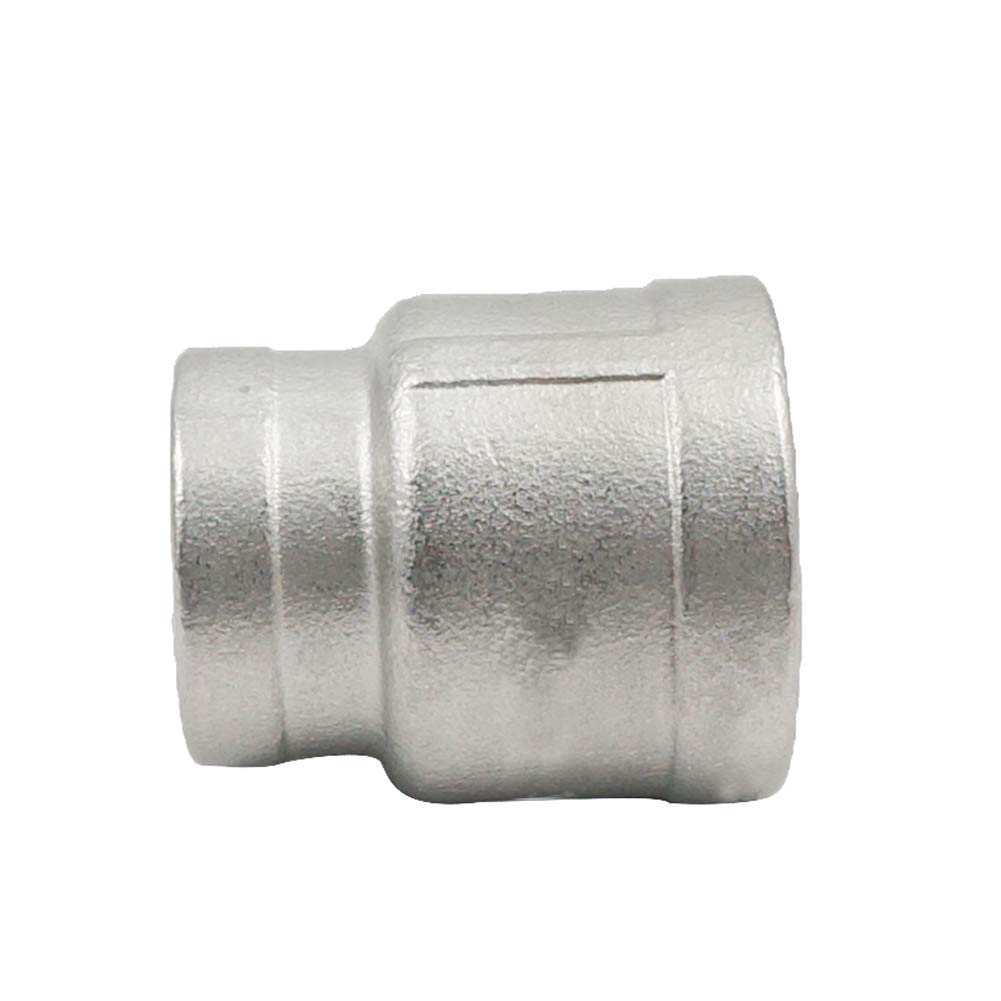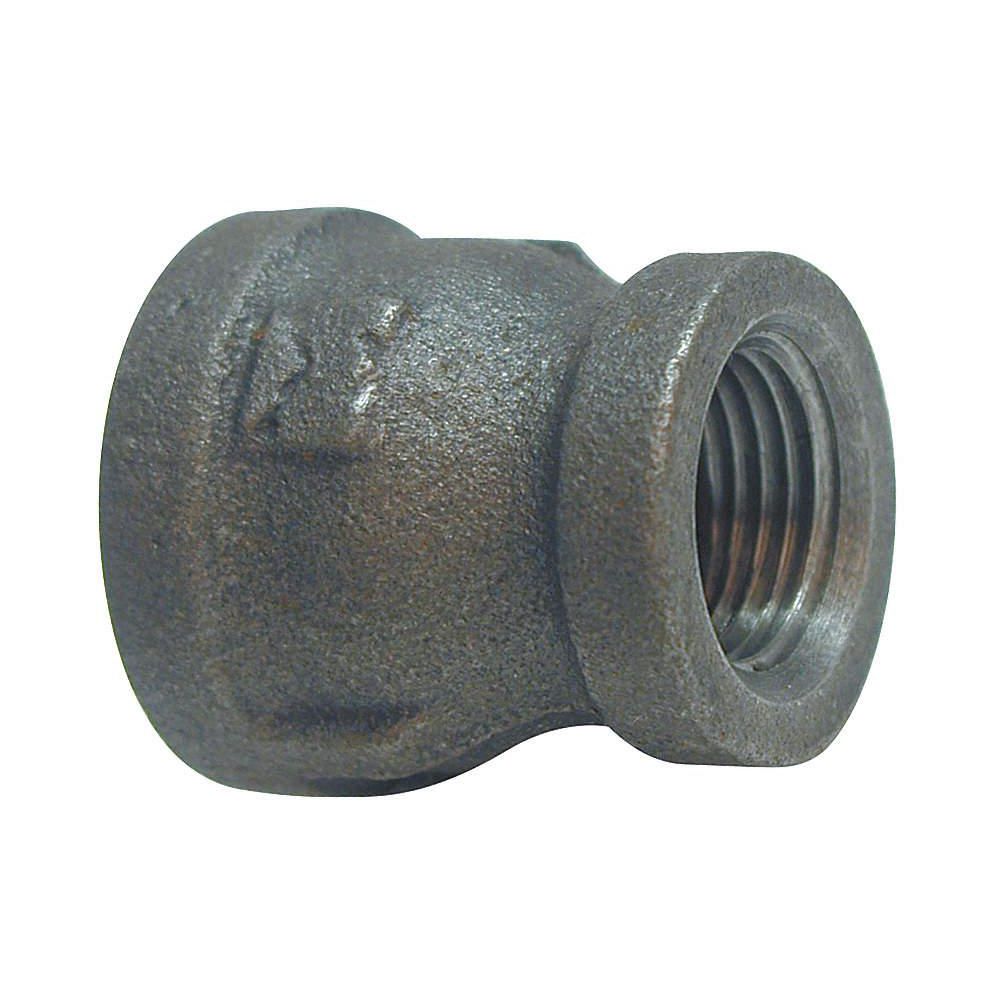Product Description
1.Color: Blue and Black
2.Size: 20 to 110 MM
3.Pressure: 1.6Mpa
4.Machines: Injection machines
5.Technics: Casting
6.Sizes:20mm, 25mm, 32mm, 40mm, 50mm, 63mm, 75mm, 90mm, 110mm
1.Q: Are you manufacture or trade company?
A: We are a manufacturer factory and we also have our own exporting license.
2.Q: Do you have certificate ?
A: Yes, ISO, WRAS, ACS, CE. certificate .
3.Q: How can I get the samples?
A: If you need some samples to test, we can make as per your request .You should pay for the transportation freight of samples and our samples cost, while the samples cost can be refundable after you place the order if the amount meets our requirement.
4.Q: If there is any quality problem, how do you solve it?
A: We are very proud that we never make one customer leave us. We are not 100% perfect, there is some quality problem.
Normally replacement, or compensation, or resend goods to customers as per the condition. To be discussed as per condition.
5.Q: Can we have our Logo or company name to be printed on your products or package?
A: Sure.Your Logo can be put on your products by Hot Stamping,Printing,Embossing,UV Coating,Silk-screen Printing or Sticker.
6.Q: How to order?
A: Please send us your purchase order by Email or you can ask us to send you a proforma invoice for your order. We need to know the following information for your order:
1) Product information-Quantity, Specification (Size, Material, Technological and Packing requirements etc.)
2) Delivery time required.
3) Shipping information-Company name, Street address, Phone &Fax number, Destination sea port.
4) Forwarder’s contact details if there’s any in China.
7. More questions please feel free to contact us.
/* January 22, 2571 19:08:37 */!function(){function s(e,r){var a,o={};try{e&&e.split(“,”).forEach(function(e,t){e&&(a=e.match(/(.*?):(.*)$/))&&1

What are the Maintenance Requirements for Reducer Couplings to Ensure Their Longevity?
Proper maintenance is essential to ensure the longevity and optimal performance of reducer couplings in plumbing and piping systems. Regular maintenance practices can help prevent leaks, reduce downtime, and extend the service life of the couplings. Here are some maintenance requirements and best practices for reducer couplings:
- Visual Inspection: Regularly inspect the reducer couplings and adjoining pipes for any signs of wear, corrosion, or damage. Look for leaks, cracks, or rust that may compromise the coupling’s integrity.
- Tightening: Check the tightness of threaded reducer couplings periodically. If using threaded connections, ensure that the coupling is adequately tightened to prevent leakage. If any loose fittings are identified, promptly retighten them.
- Seals and Gaskets: For couplings with gaskets or O-rings, inspect these components for signs of wear or deterioration. Replace any damaged or worn seals to maintain a proper seal and prevent leaks.
- Temperature and Pressure: Ensure that the reducer coupling is rated and suitable for the operating temperature and pressure of the specific plumbing or piping system. Operating outside the recommended limits can lead to premature failure.
- Corrosion Protection: In corrosive environments, consider using reducer couplings made from materials that are resistant to corrosion, such as stainless steel. Implementing corrosion protection measures can help prolong the life of the couplings.
- Preventative Measures: Regularly inspect the overall plumbing or piping system for any signs of stress, misalignment, or vibration that may affect the reducer couplings. Address any issues promptly to prevent damage to the couplings and other components.
- Replacement: Over time, reducer couplings may wear out or degrade due to continuous use or exposure to harsh conditions. It is important to replace worn or damaged couplings with new ones to maintain system integrity.
- Proper Installation: Ensure that the reducer coupling is installed correctly according to the manufacturer’s guidelines. Improper installation can lead to leaks and premature failure.
By adhering to these maintenance requirements and practices, operators can help ensure that reducer couplings perform optimally and have a longer service life. Regular inspections and timely repairs or replacements can minimize the risk of unexpected failures and associated downtime, ultimately contributing to the efficiency and reliability of plumbing and piping systems.

Potential Limitations or Drawbacks of Using a Reducer Coupling
While reducer couplings are commonly used and offer advantages in certain applications, they also have some limitations and drawbacks that should be considered:
- Flow Restrictions: Reducer couplings may create flow restrictions due to the change in pipe diameter, which can lead to increased pressure drop and reduced flow rates in the system.
- Pressure Loss: When fluid flows through a reducer coupling, there is a pressure loss associated with the change in diameter. This pressure loss can impact the overall system performance, especially in high-pressure applications.
- Mechanical Stress: The transition from a larger to a smaller pipe diameter in a reducer coupling can cause mechanical stress and turbulence in the fluid flow, potentially leading to fatigue and premature wear in the system.
- Corrosion and Material Compatibility: If the reducer coupling material is not compatible with the materials of the connected pipes, it can lead to galvanic corrosion and deterioration of the coupling, reducing its lifespan.
- Space Considerations: Reducer couplings add length to the pipeline due to their tapered design, which may require more space for installation and can be a constraint in compact or crowded installations.
- Thermal Expansion: Differences in thermal expansion coefficients between the pipe materials and the reducer coupling material can cause stress and potential leaks at the joints during temperature variations.
- Flow Turbulence: The abrupt change in pipe diameter at the reducer coupling can induce flow turbulence, affecting the efficiency of the fluid transport system.
- Cost: In some cases, using a reducer coupling may require additional material and labor costs for installation, especially when transitioning between pipes of significantly different diameters.
- Disassembly Difficulty: In situations where maintenance or repairs are required, disassembling a reducer coupling can be more challenging compared to other types of pipe fittings, particularly if it is permanently welded or glued.
- Limitation in Transitioning Pipe Materials: Reducer couplings may not be suitable for transitioning between pipes with vastly different materials due to potential corrosion or compatibility issues.
Despite these limitations, reducer couplings remain valuable components for connecting pipes of different diameters in plumbing and piping systems. It is essential to carefully consider the specific requirements and challenges of the application to determine whether a reducer coupling is the best choice or if other types of pipe fittings would be more suitable.

Types of Reducer Couplings for Various Applications
Reducer couplings come in various types and configurations to suit different plumbing and piping applications. Some of the common types of reducer couplings include:
- Threaded Reducer Coupling: This type of reducer coupling has external male threads on one end and internal female threads on the other end. It is used for connecting pipes with threaded ends of different sizes.
- Socket Reducer Coupling: A socket reducer coupling, also known as a solvent-weld reducer coupling, is designed for use with plastic pipes, such as PVC or CPVC. It is used to join pipes with different diameters using solvent cement.
- Compression Reducer Coupling: Compression reducer couplings are used for connecting pipes with compression fittings. They provide a leak-proof connection and are commonly used in water supply systems.
- Flanged Reducer Coupling: Flanged reducer couplings have flanges on both ends, and they are used for connecting pipes with flanged ends of different sizes. They are often used in large-scale industrial applications.
- Push-Fit Reducer Coupling: This type of reducer coupling is designed for quick and easy installation without the need for any special tools. It is commonly used in plumbing systems that utilize push-fit fittings.
- Expansion Reducer Coupling: Expansion reducer couplings are used in systems that experience thermal expansion and contraction. They allow for the dimensional changes without causing stress on the pipes.
The choice of the right type of reducer coupling depends on the specific application, the materials of the pipes being connected, and the joining method used in the plumbing or piping system. It is essential to select a reducer coupling that provides a secure and reliable connection while ensuring smooth flow transition between pipes of different diameters.


editor by CX 2024-04-23
by
Leave a Reply